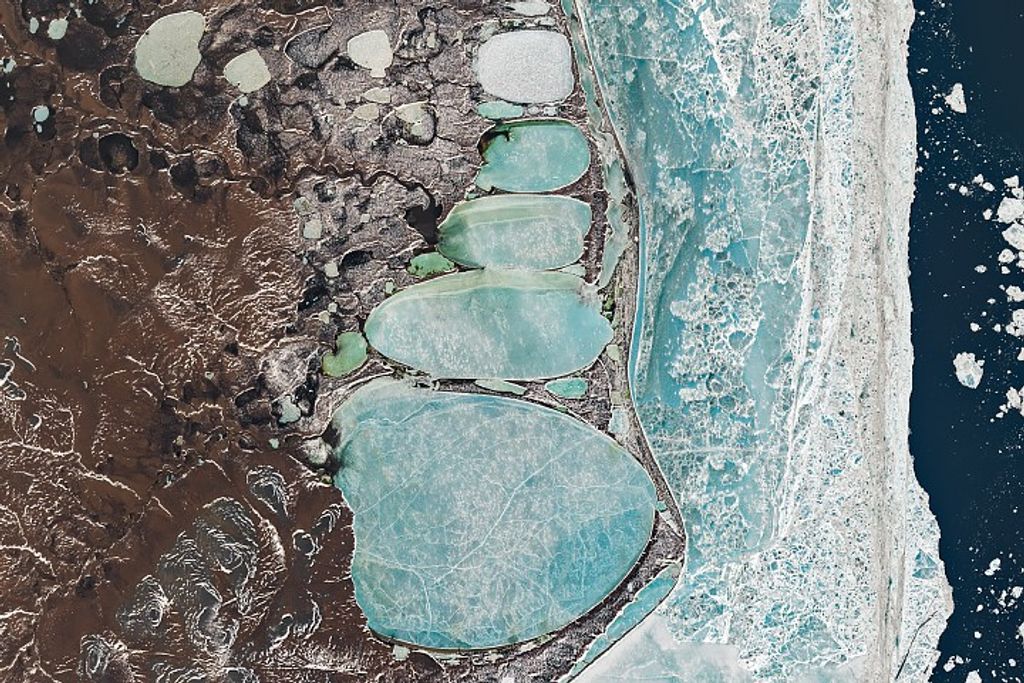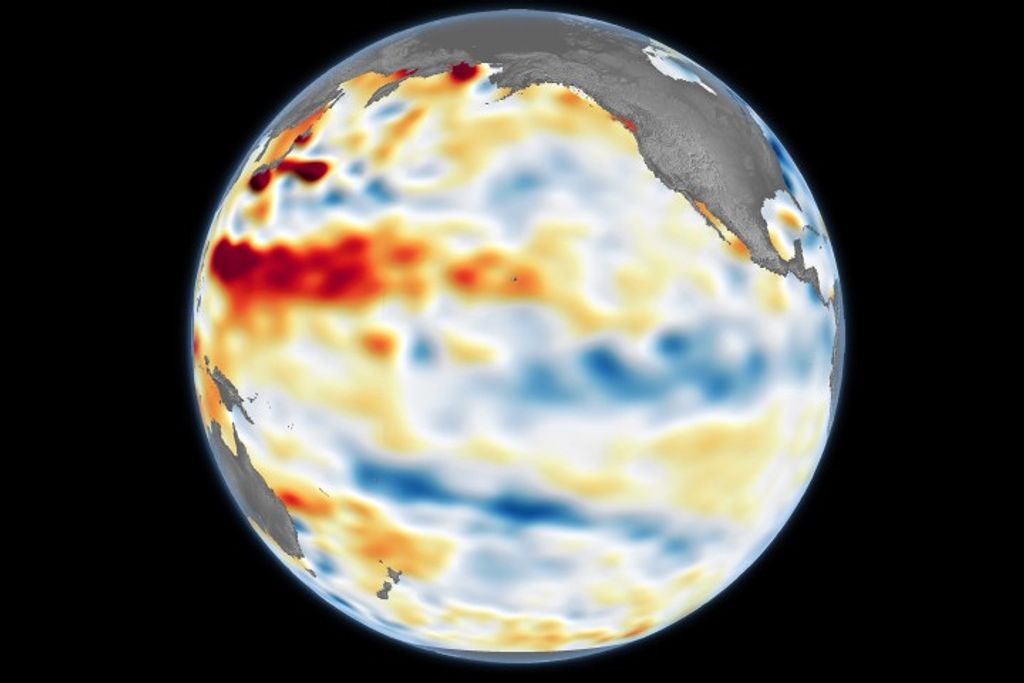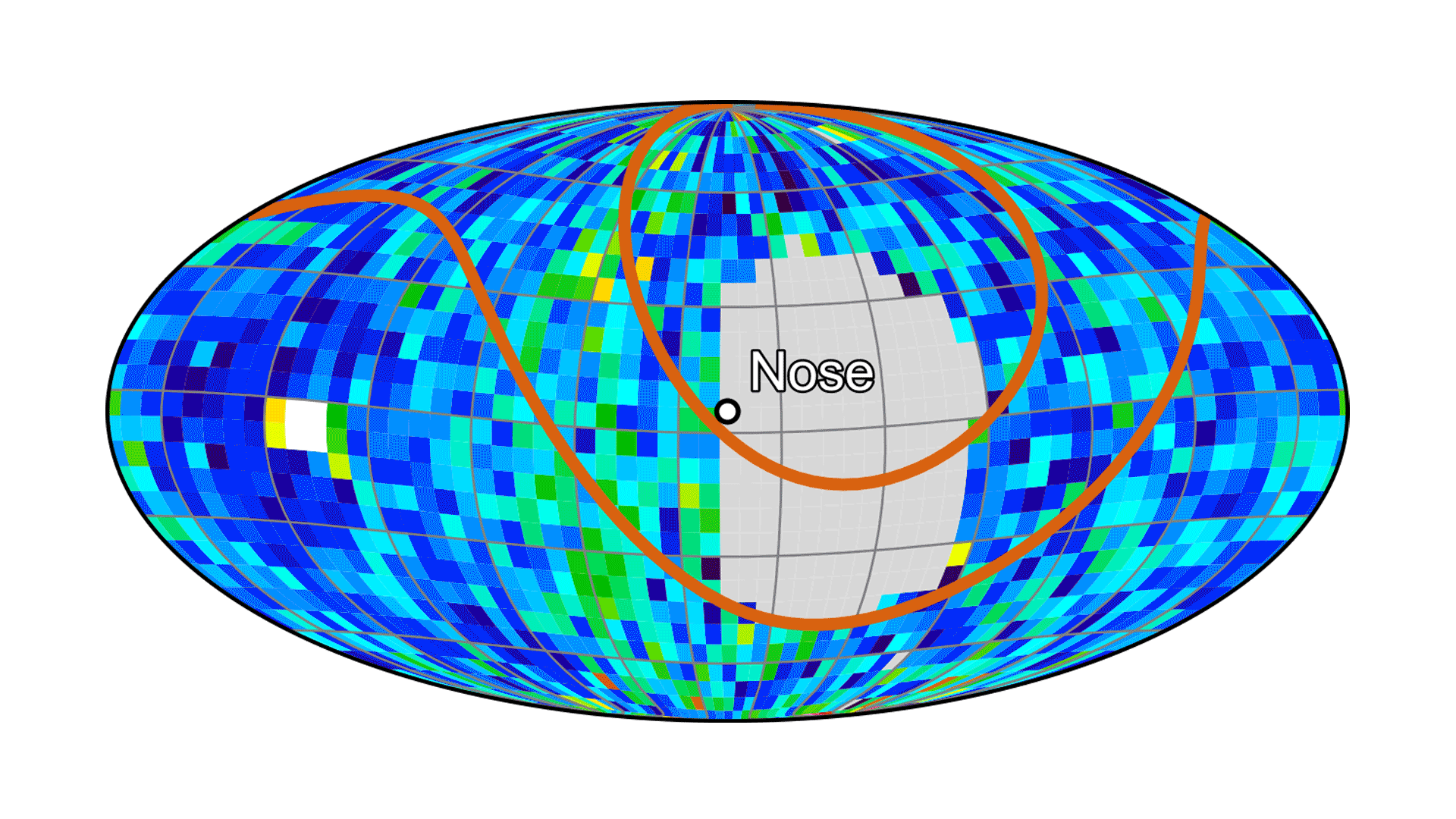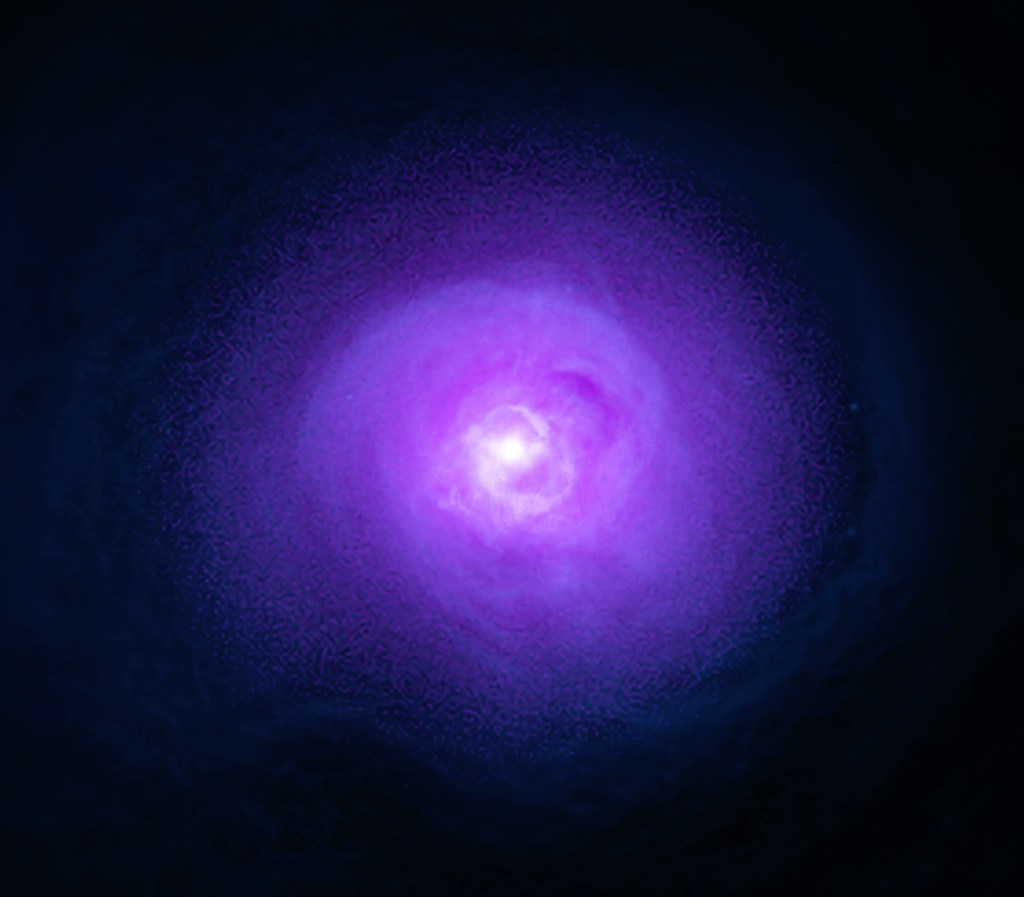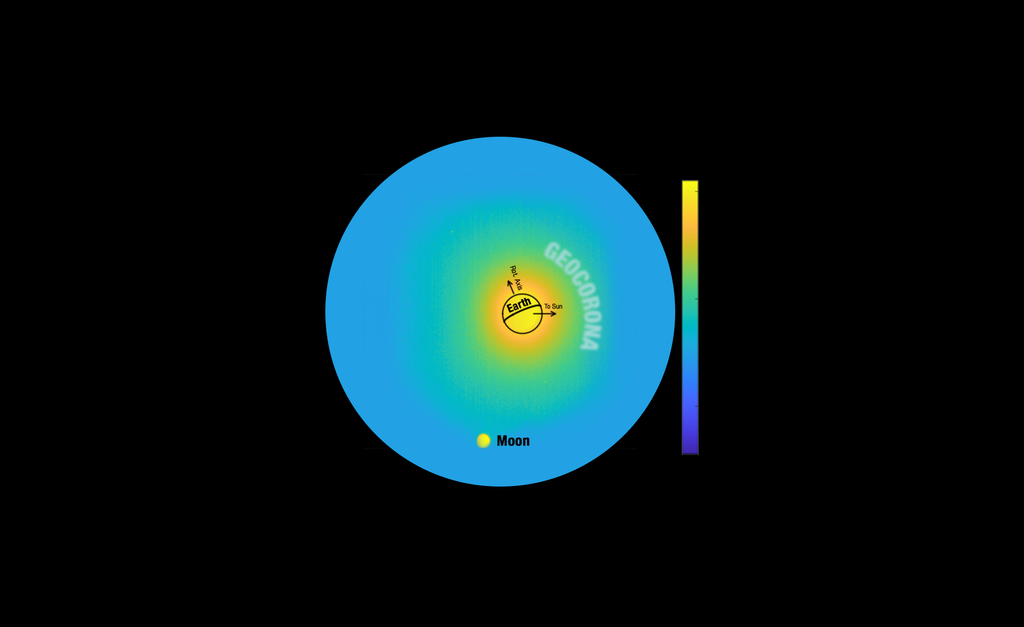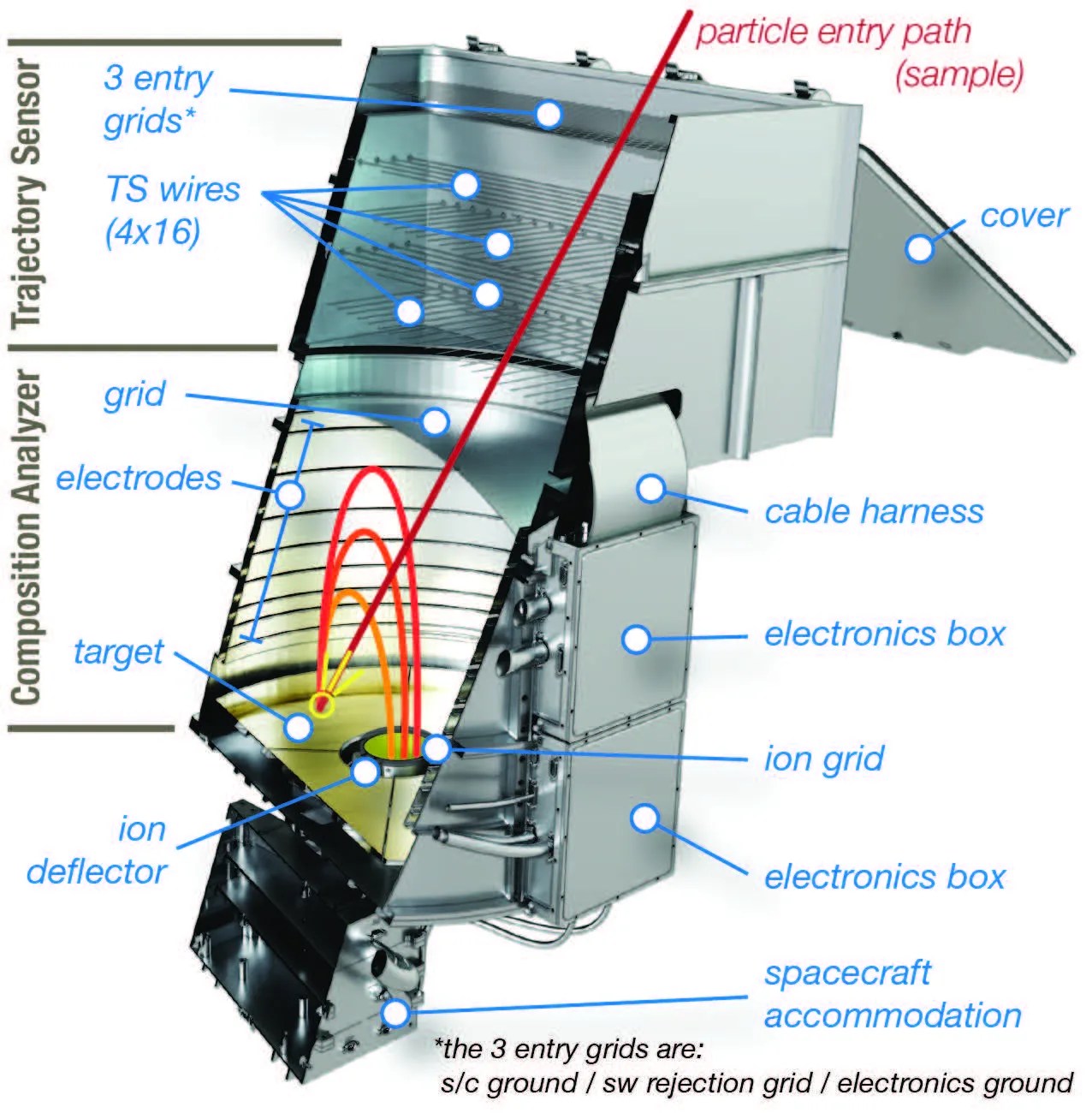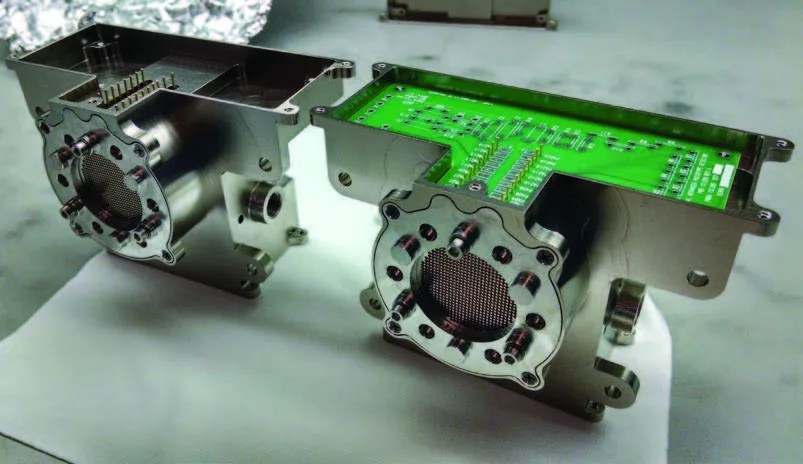PROJECT
High-Performance In Situ Dust Analyzer (Hyperdust)
KEY POINTS
Hyperdust’s unique ion optics design combines the ability to provide high-performance composition measurements with the aperture that is needed to detect a statistically significant number of particles in space over a standard mission duration of a few years.
The history of the formation and evolution of the Solar System is encoded in the compositional diversity of its small bodies, including comets and asteroids, and the solid material that was the source of it all: interstellar dust. But there are simply too many small bodies to be visited and investigated individually. Instead, what if scientists could survey the tiny particles (microsamples) that originate from these bodies and are delivered near Earth’s orbit by dynamic processes?
The High-Performance In Situ Dust Analyzer (Hyperdust) Project is developing a highly capable instrument to measure the compositional diversity of many thousands of solid particles in space. The Composition Analyzer part of this instrument is now in development for deployment on NASA’s Interstellar Mapping and Acceleration Probe (IMAP) mission to be launched in 2024. Over the past four years, the Hyperdust Project has been maturing a novel instrument concept that will provide the capability of analyzing the composition of micron- and submicron-sized cosmic dust particles with higher resolution and sensitivity than ever before. The National Research Council’s 2013 Planetary Science Decadal Survey notes that, “There are too many asteroids, comets and KBOs [Kuiper belt objects] to explore individually by spacecraft.” Over the past 30+ years, in situ composition measurements have been obtained only for a handful of asteroids and comets. The Hyperdust instrument offers a paradigm shift, from an approach limited to observing a few bodies individually, to one surveying the entire solar system and beyond.
Hyperdust is a complex instrument that measures the velocity vector and composition of each cosmic particle encountered in space. The former measurements are accomplished by the Trajectory Sensor, which consists of an array of wire electrodes that sense the particles when they enter through the aperture. The velocity information is used to identify the origin of each particle based on its orbit around the Sun. The Composition Analyzer then measures the composition of ions that are generated by the high-speed impact of the dust particle on a clean metal surface. This information reveals the elemental and chemical composition of the impacting dust. The Hyperdust project team developed key elements of this measurement capability, namely the sensitive electronics needed to detect the particle in the Trajectory Sensor, the refined ion optics, and the ion detector.
The full Hyperdust instrument is approximately 70 cm tall and has a disk-shaped impact collection surface that is 40 cm in diameter. Such large size is needed to collect a statistically significant number of particles and their composition information. The Composition Analyzer part of the instrument has been selected to fly on the IMAP mission—the fifth mission selected in NASA’s Solar Terrestrial Probes program. The goal of the IMAP-bound instrument is to map out the composition of interstellar particles traversing through the solar system and link their composition to the characteristics and physical processes of the interstellar medium.
Besides detecting and analyzing cosmic dust in interplanetary space, the technology advanced during development of the Hyperdust instrument is also supporting exploration of icy worlds and their habitability. For example, NASA is developing the SUrface Dust Analyzer (SUDA) instrument for the Europa Clipper mission. SUDA carries an ion detector that is based on that developed for Hyperdust. The SUDA instrument will analyze the icy particles originating from the surface of the Jovian moon Europa, and identify the chemicals embedded in the ice, both organic and inorganic.
SPONSORING ORGANIZATION
Planetary Science Division’s MatISSE Program
PROJECT LEAD
Dr. Zoltan Sternovsky, University of Colorado








